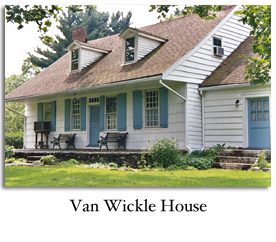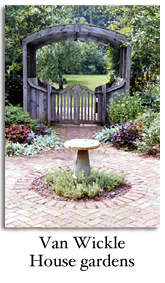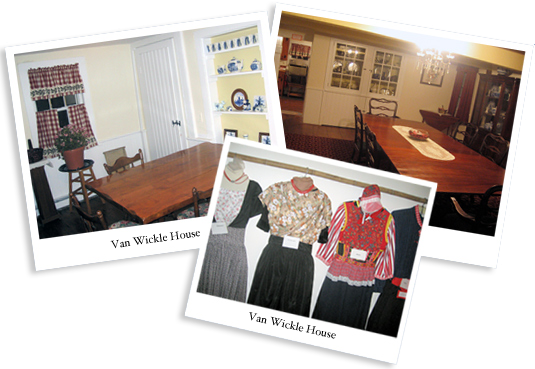 UPDATE:
UPDATE:
We regretfully report that as of late October, 2014, the Van Duyn-Van Wickle House has been closed to the public. This is because of structural issues that have arisen due to the house being flooded during our last few severe storms (Irene, Sandy, etc.), and extensive damage due to Ida. Franklin Township shares our concern for the future of this home, and we are working diligently with county, state and federal agencies to save this historic structure with a complete restoration.
In the interim, we are improving the grounds and other structures for your use and enjoyment. The nature trail, which was also lost due to severe weather, is being reinstalled. An Eagle Scout Candidate has made it his project to repair the observation decks and install signage with information on the ecosystems, plants and wildlife that can be found on the property. Whenever possible we will host outdoor events at the site, and you are welcome to enjoy the site for bird watching (very popular) or a quiet stroll. Our future plans also include renovating the Vergano Center, including displays on the house’s timeline, the Delaware and Raritan Canal, and information on the construction and renovation of the house as it becomes available. The property is still available for rental as an outdoor venue.
____________________________________
The 800-acre farm was first settled by Denys Van Duyn, whose family cleared and farmed the land and built the house on spot it still occupies today. In the mid-1800s, two well-known maps were made of the area, and the house is labeled as Van Wickle. At the time the maps were made, the farm had been purchased by Nicholas Van Wickle, a descendent of Symen Van Wickle.
 Of a style commonly called “Anchorbent Dutch,” the house is a combination of Dutch, Flemish, and English influences and is an excellent example of early 18th-century Dutch architecture unique to the New Jersey-New York area. The house itself, of massive anchorbent post-and-beam construction, measures 30 by 40 feet, sitting solidly on a stone foundation. Somerset County Cultural and Heritage Commission provided grant money for the production of an Historic Structure Report. The research included the application of dendrochronology, and some of the white oak cut down on site to build the house dated back to 1564.
Of a style commonly called “Anchorbent Dutch,” the house is a combination of Dutch, Flemish, and English influences and is an excellent example of early 18th-century Dutch architecture unique to the New Jersey-New York area. The house itself, of massive anchorbent post-and-beam construction, measures 30 by 40 feet, sitting solidly on a stone foundation. Somerset County Cultural and Heritage Commission provided grant money for the production of an Historic Structure Report. The research included the application of dendrochronology, and some of the white oak cut down on site to build the house dated back to 1564.
The house has witnessed many fascinating historical events. During the Revolutionary War, the British occupied the Raritan Landing for several months in 1777. In early 1834, the Delaware & Raritan Canal arrived in the front yard. In 1838 the house was studied as part of the Historic American Building Survey, which can be found online in the Library of Congress: https://www.loc.gov/resource/hhh.nj0802.photos?st=gallery
Standing like a rock since the early 1700s, the house has been farmhouse, colonial showplace, and home for generations of owners. Restoration has included the addition of such important new features as a public restroom, formal gardens, wetland boardwalk, Vergano program center and nature trail.
This historic home, located at 1289 Easton Avenue in Somerset, plays host to a variety of Meadows programs and events. For upcoming events please see our calendar.

